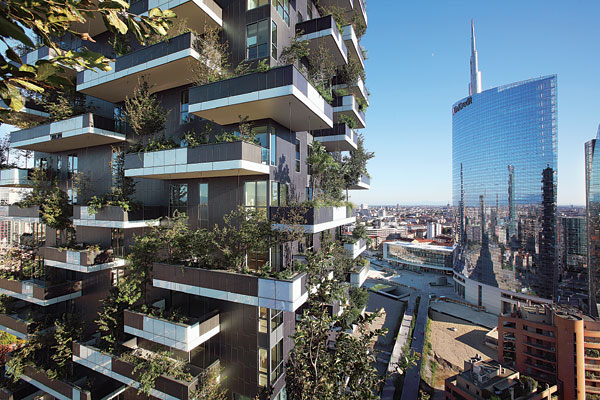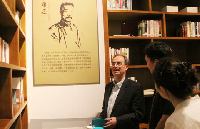Urban jungle to vertical forest
 |
|
The original project in Milan. [Photo provided to Shanghai Star] |
Growing idea
Chinese architect Xu Yibo studied under Boeri in Italy and has launched a company in Shanghai in conjunction with his mentor and Michele Brunello.
"The two towers in Milan are like a laboratory," said Xu. "They have already found a lot of birds nesting there, as well as good and bad insects. However, it's an experimental adventure aimed at benefitting the future urban life, and it is bringing biodiversity back to the city."
"The foliage also acts like a screen," he added. "It lowers the temperature inside the buildings during the summer months by an average of 5 degrees Celsius, thus conserving energy."
He said several Chinese cities have expressed interest in the concept, including Beijing and Shandong's Qingdao, but they are initially focused on Shanghai and Shenzhen, Guangdong province.
"These two cities have high levels of humidity, which makes them more suitable," he said. "Beijing offers different climatic conditions because it is so dry."
One potential roadblock here could come from tenants displeased at having their views obscured as neighbors let their hanging plants grow unhindered to maximize the effect of the vertical forest.
But at least the project would not drain the city's water resources. The plants will be nourished by rainfall and ground water that would eventually be recycled, Boeri said.
DOBE Group, which promotes eco-office space in China, will launch a new project with Boeri later this year on the Bund, it said. The group operates 25 cultural and creative areas covering a total of 700,000 square meters.
"I believe the vertical forest has a beautiful future in China,” said Jia Bo, DOBE’s president.
It may also inspire others to take up the mantle, adding to the rooftop and hanging gardens that are already starting to proliferate around the city, for example around Bridge 8, an abandoned factory turned creative hub and incubator.
Others are finding new lots in which to cultivate vegetables and fruits in an urban context, Fassi said, adding that this trend has been growing exponentially in recent years.
He is working on a community garden project linked to several new buildings that will open next year at Tongji’s College of Design and Innovation. This is modeled on a similar venture he was involved in at the Polytechnic University of Milan two years ago, the idea being to share the green spaces of a public university with the local community.
"It took one year in Milan to develop 1,000 square meters because the research team at the polytechnic's design department created DIY toolkits for people to use, sort of IKEA-style," said Fassi.
"What is special here in China, which we don't have in Italy, is a tradition of people entering the campuses to enjoy the space, such as taking walks after dinner, so it's easier to get them involved in such projects," he said.
"We found that the build-up phase is the most important, because people develop more affection for the project and take more care of it."




















